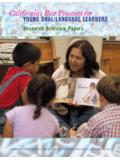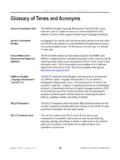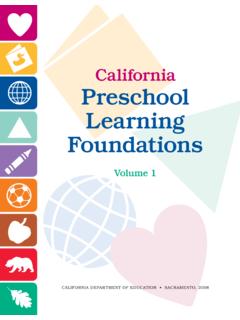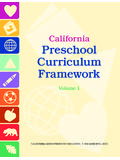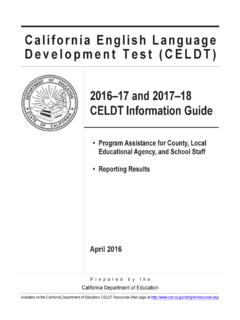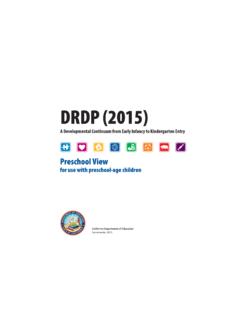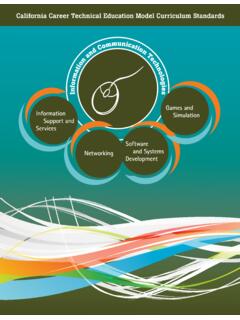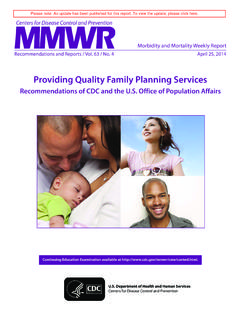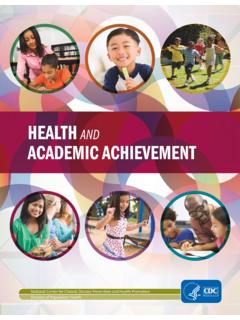Transcription of Family Engagement Toolkit - California Department of …
1 Family Engagement Toolkit Continuous Improvement through an Equity Lens California Department of Education The Family Engagement Toolkit was developed by the California Department of Education (CDE) in collab- oration with the California Comprehensive Center at WestEd, the Alameda County Office of Education, the Nevada County Office of Education, the Riverside County Office of Education, and the Sacramento County Office of Education. This work was supported in part by the California Comprehensive Center through funding by the Department of Education, PR/Award Number S283B120012.
2 It does not necessarily reflect the views or policies of the Department of Education and one should not assume endorsement by the federal government. Authors Nancy Bodenhausen California Department of Education Margit Birge California Comprehensive Center at WestEd Contributors Jason Arenas Alameda County Office of Education Melissa Bazanos Riverside County Office of Education Shar Johns Nevada County Office of Education Jan Mayer Sacramento County Office of Education Production Team Joy Zimmerman, Editor WestEd Christian Holden, Graphic Designer WestEd Copyright 2017, California Department of Education.
3 Permission to reproduce with the California Department of Education copyright notice is hereby granted. Suggested citation: California Department of Education. (2017). Family Engagement Toolkit : Continuous Improvement Through an Equity Lens. Sacramento, CA: Author. Contents Introduction .. 1. Toolkit Overview ..5. Effective Family 7. Laying The 10. Getting Started: Where Are We Now? .. 14. The Process of Continuous Improvement: Plan, Do, Reflect, Conclusion ..35. Appendix A: Development of Toolkit and Key Themes from Literature on Family Appendix B: Appendix C: Examples of Tools from a Fictitious Family Engagement Toolkit Appendix D: Methods of Collecting References.
4 68. Introduction The integral role of Family engagement1 in school improvement has been the focus of increased attention throughout the United States in recent years, perhaps more so than at any time since the 1960s when the importance of parental involvement was recognized in the original Elementary and Secondary Act (ESEA), which was part of the War on Poverty legislation. Driving this more recent push has been the growing recognition, grounded in research, that effective Family Engagement can contribute to improved student outcomes and to closing persistent achievement gaps among students of different racial and ethnic backgrounds and Family income levels.
5 Moreover, experts advocate for Family Engagement as an essential strategy for building the pathway to college and career readiness for all students, as well as an essential component of a systems approach to school turnaround (Weiss, Lopez, Rosenberg, 2010; Center on School Turnaround, 2017). State and federal legislation reflects this increased attention. By 2013, 39 states and the District of Columbia had enacted laws calling for the implementation of Family engage- ment policies (Mapp & Kuttner, 2013). The 2015 reauthorization of ESEA, the Every Student Succeeds Act (ESSA), continues to emphasize Family Engagement as a necessary element for improving student outcomes.
6 For example, Title I of ESSA continues to require parent and Family Engagement policies and programs (Section 1116); Title III requires local education agencies (LEAs) to strengthen parent, Family , and community Engagement in programs that serve English Learners (Section 3111 [b][2][D][iv]). Family Engagement Toolkit As a result of all this, growing numbers of districts and schools around the country have been engaging families in creative and effective ways. Yet the authors' broad experience working closely with districts and schools throughout California suggests that many educators continue to struggle with the how-to of translating positive research findings about Family engage- ment into effective and sustainable structures and practices especially ones that embrace the full range of diverse families in their community.
7 This Toolkit was developed to help dis- tricts and schools by providing practical planning and evaluation tools that support efforts to engage all families, particularly those of underrepresented and underserved students. INTRODUCTION. 1 The term Family Engagement is used in this Toolkit for a number of reasons: to reflect the term used in the Every Student Succeeds Act of 2015; because the research and practice in the field has evolved from using parent to including the broader term Family ; and because Engagement . denotes a shared responsibility for designing and building a partnership between home and school.
8 1. As is the case for much of the Family Engagement research, this Toolkit uses the term Family in its broadest sense, to include any adults who serve a parental role in children's lives. This term includes, for example, birth and adoptive parents, grandparents and other adult relatives, foster parents and other non- related legal guardians, and adults who are close to children although they may not have a guardian role, such as a pastor or a youth group counselor. Development of the Toolkit Each of the six individuals involved in developing this Toolkit comes from a different California - based education entity that has extensive responsibility for, and experience with, supporting districts and schools on a range of education improvement efforts, including strengthening fam- ily Engagement .
9 Those entities are the California Comprehensive Center at WestEd; California Department of Education, specifically its Title I Policy and Program Guidance Office; and four California county offices of education Alameda, Nevada, Riverside, and Sacramento. In our work with districts and schools, we frequently hear some version of the following questions: yy How can we increase the Engagement of underrepresented families? yy How can we help teachers and administrators become more skilled and comfortable working with all families? yy What kind of Family Engagement activities are likely to lead to the biggest learning advances for students?
10 Yy How can we know if our Family Engagement efforts are having the desired effect? In considering how to help educators address these important questions in the unique con- text of their district or school, we reviewed the research on Family Engagement , reflected on our collective years of technical assistance work in districts and schools, and conducted a review of district-level plans for Family Engagement from across California . (Details about the research on Family Engagement and our review of district plans are included in Family Engagement Toolkit appendix A).
